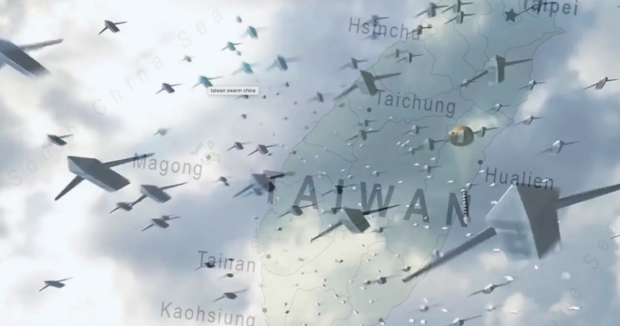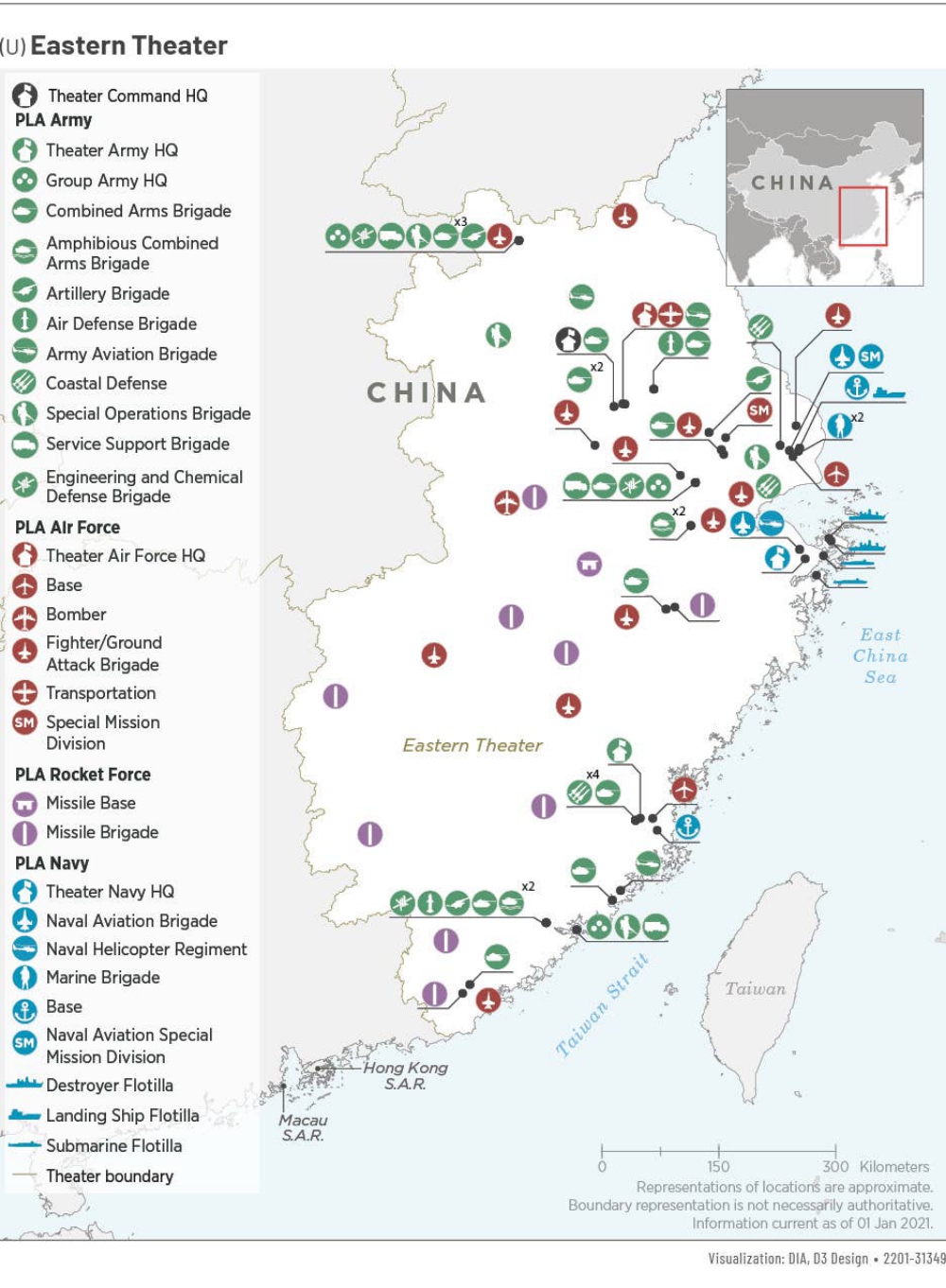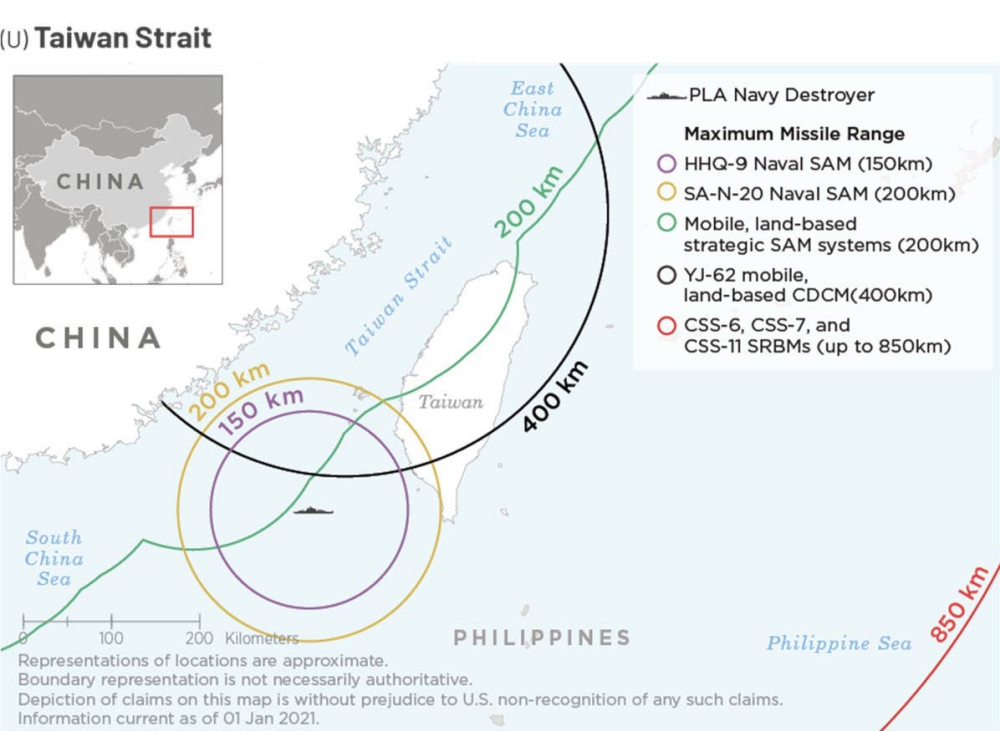Wargames that the U.S. Air Force has conducted itself and in conjunction with independent organizations continue to show the immense value offered by swarms of relatively low-cost networked drones with high degrees of autonomy.
In particular, simulations have shown them to be decisive factors in the scenarios regarding the defense of the island of Taiwan against a Chinese invasion.
Last week, David Ochmanek, a senior international affairs and defense researcher at the RAND Corporation and a former Deputy Assistant Secretary of Defense for Force Development during President Barack Obama’s administration, discussed the importance of unmanned platforms in Taiwan Strait crisis-related wargaming that the think tank has done in recent years. Ochmanek offered his insight during an online chat, which you can watch in full below, hosted by the Air & Space Forces Association’s Mitchell Institute for Aerospace Studies.
At least some of RAND’s work in this regard has been done in cooperation with the Air Force’s Warfighting Integration Capability office, or AFWIC. Last year, the service disclosed details about a Taiwan-related wargame that AFWIC had run in 2020, which included the employment of a notional swarm of small drones, along with other unmanned platforms.
“I’m sure most everybody on this line has thought extensively about what conflict with China might look like. We think that, as force planners, we think that an invasion of Taiwan is the most appropriate scenario to use because of China’s repeatedly expressed desire to forcibly reincorporate Taiwan into the mainland if necessary and because of the severe time crunch that would be associated with defeating an invasion of Taiwan,” Ochmanek offered as an introduction to RAND’s modeling. “U.S. and allied forces may have as few as a week to 10 days to either defeat this invasion or accept the fait accompli. And the Chinese understand that if they’re to succeed in this, they either have to deter the United States from intervening or radically suppress our combat operations in the theater.”
“With all of this, our forces are going to be confronted with the need to not just gain air superiority, which is always a priority for the commander, but to actually reach into this contested battlespace, …and find the enemy and engage the enemy’s operational center of gravity – those hundreds of ships carrying the amphibious forces across Strait, the airborne air assault aircraft carrying light infantry across the Strait,” he continued. There will be a need to “do that even in the absence of air superiority, which is a very different concept of operations from what our forces have operated with in the post-Cold War era.”
Ochmanek says that modeling that RAND has done, including simulations conducted in cooperation with the Air Force, shows that large numbers of unmanned aircraft, especially relatively small and inexpensive designs capable of operating as fully-autonomous swarms using a distributed “mesh” data-sharing network, have shown themselves to be absolutely essential for coming out on top in these wargames.
The former Deputy Assistant Secretary of Defense outlined one broad, but still detailed scenario for how such a swarm of unmanned aerial vehicles (UAV) would be employed in the defense of Taiwan:
What Ochmanek laid out are exactly the kinds of significant advantages an autonomous drone swarm has the potential to offer in terms of operational flexibility, as well as cost, over manned aircraft, something that The War Zone regularly highlights. Since the individual drones in an autonomous swarm are designed to collaborate with each other, this means that each individual platform does not automatically have to be configured to perform all of the desired missions that the group is collectively expected to carry out.
If a single unmanned aircraft only has to act as a sensor node, weapons truck, jammer, or datalink relay, among other things, it then also opens up the option to make that platform smaller and cheaper than it would be if it had to be a more exquisite multi-role platform. Of course, as Ochmanek himself points out, a swarm offers important additional benefits in a scenario in which it is teamed directly with manned platforms.
“For many, many years this country’s been on a vector of increasingly sophisticated, expensive platforms in ever-smaller numbers, and we’ve seen the inventory of combat aircraft in the Air Force decrease because of this ineluctable trend of increasing cost per platform. That had a strong rationale when we had technical and operational superiority over our adversaries and when in fact we were very concerned about attrition,” Ochmanek said. “The advent of autonomy means that we have the opportunity now to flood the battlespace essentially with inexpensive platforms that can do the jobs that human beings have in the past done and done them actually more robustly than manned concepts.”
Ochmanek highlighted how advances in machine learning and artificial intelligence (AI), and separate networked weapon concepts that the Air Force, among others, is working on now, will only add to a future autonomous swarm’s capabilities in any context. He indicated that this had been an additional factor in the game-changing employment of swarms in Taiwan Strait conflict simulations.
“The image we have is you send these things out to the battlespace and they are talking so to speak among themselves. When someone ‘sees’ something of interest – oh that looks like a Renhai [People’s Liberation Army Type 055 destroyer] – they’ll gang up on it, and you’ll get multiple looks … from multiple angles,” he explained. “They’ll share data. The automatic target recognition function will turn those data into a nominated target. And as weapons come in, the mesh itself will grab that weapon and say ‘your primary target is this. I’m not only going to assign you to that target, I’m going to help you hit 47 feet aft of the bow so you maximize your probability of kill against that particular platform.'”
Source: The Drive



